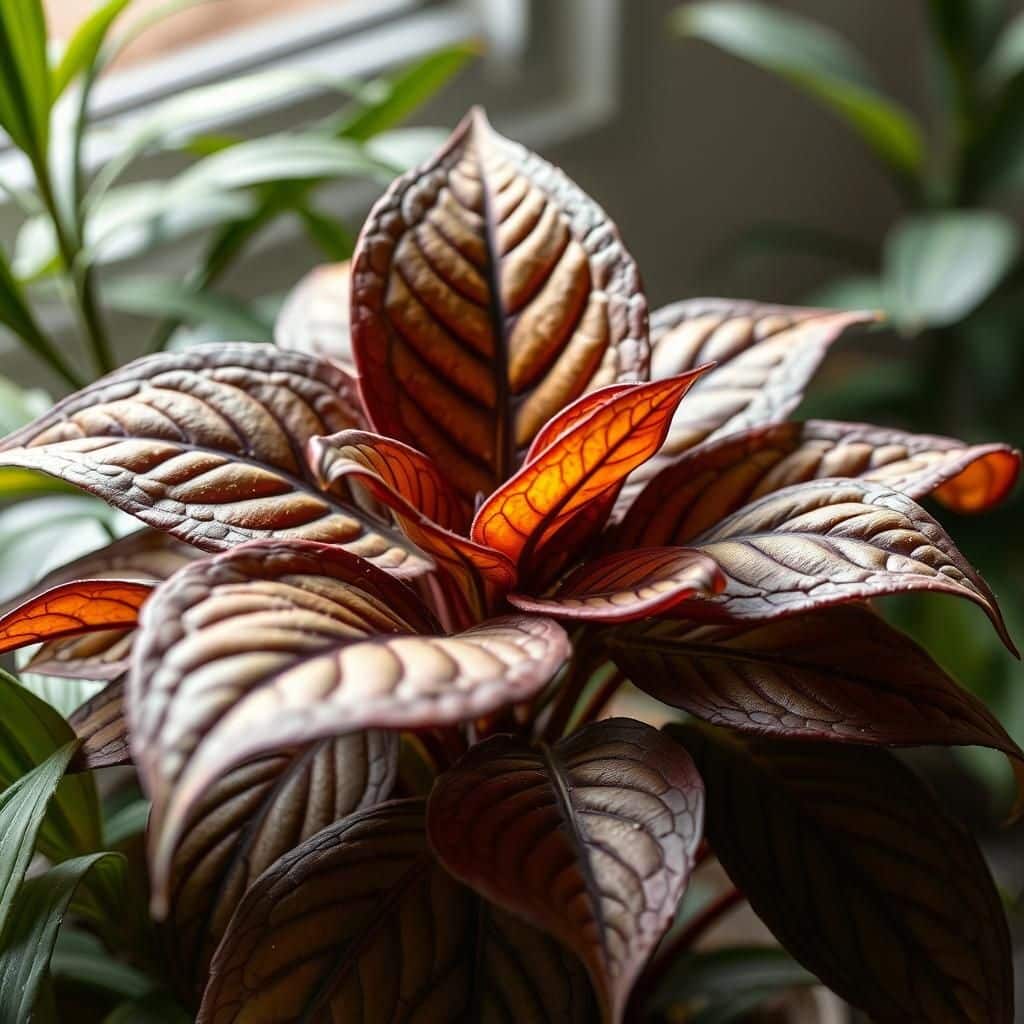Top 10 Reasons Why Your Houseplant Leaves are Turning Brown and How to Fix It

Houseplants bring life and color to our homes, but when their leaves start turning brown, it can be concerning. Whether you’re a seasoned plant enthusiast or a casual gardener, understanding the reasons behind this troubling change is essential for maintaining healthy foliage. In this article, we’ll explore the top 10 reasons your houseplant leaves may be browning, from improper watering to environmental stressors. We’ll also provide practical solutions to help revive your beloved plants and keep them thriving. Dive in to discover how to diagnose the problem and restore your green companions to their vibrant best.
Causes of Houseplant Leaves Turning Brown
Houseplant leaves can turn brown for a variety of reasons, ranging from environmental stress to improper care. One common cause is underwatering, which deprives the plant of necessary moisture, leading to leaf tips and edges browning and dying. Conversely, overwatering can also result in brown leaves, as it creates conditions for root rot, causing the plant to suffer. Another factor can be low humidity, particularly for tropical plants that thrive in moist environments. Nutrient deficiencies, particularly in essential elements like nitrogen, can lead to discolored foliage as plants are unable to utilize available resources effectively. Lastly, direct sunlight exposure can scorch leaves, leading to brown patches, making it essential to position your houseplants according to their light requirements.
Underwatering
Underwatering is when a houseplant does not receive enough water, leading to dehydration. This situation causes the leaves to lose moisture, resulting in browning, especially at the tips and edges. To determine if a plant needs more water, check the top inch of soil; if it feels dry, it’s time to water. Adjusting your watering schedule and ensuring proper drainage can help prevent this issue.
Overwatering
Overwatering occurs when a plant is given too much water, causing the roots to become waterlogged and resulting in root rot. This restricts the plant's ability to absorb nutrients and increases the likelihood of leaf browning. Signs of overwatering include yellowing leaves, moldy soil, and a musty smell. It’s crucial to use pots with drainage holes and allow the soil to dry out between watering sessions.
Low Humidity
Many houseplants, especially tropical varieties, thrive in high humidity levels. Low indoor humidity can cause leaves to turn brown and crispy as moisture evaporates from the leaves faster than the plant can absorb it. To increase humidity, consider using a humidifier, placing a tray of water near the plant, or misting the leaves occasionally. Grouping plants together can also create a microclimate of higher humidity.
Nutrient Deficiencies
Nutrient deficiencies can lead to various symptoms, including browning of leaves. A common deficiency is a lack of nitrogen, which is crucial for healthy leaf growth. If you notice browning alongside stunted growth, it may be time to evaluate your plant's feeding regimen. Using a balanced fertilizer at the right intervals can help restore vital nutrients, promoting healthier foliage.
Excessive Sunlight
Exposing houseplants to direct sunlight for prolonged periods can scorch their leaves, leading to unsightly brown patches or crisp edges. Each plant has specific light requirements, and understanding these can mitigate damage. If brown leaf tips appear, consider relocating your plant to a spot with indirect light or using sheer curtains to diffuse the sunlight.
| Cause | Symptoms | Solutions |
|---|---|---|
| Underwatering | Browning tips, dry soil | Adjust watering schedule |
| Overwatering | Yellowing leaves, moldy soil | Improve drainage, reduce water |
| Low Humidity | Crispy leaf edges | Use humidifier, mist leaves |
| Nutrient Deficiencies | Browning leaves, stunted growth | Fertilize regularly |
| Excessive Sunlight | Scorched patches | Relocate to indirect light |
How do you fix brown leaves on plants?

To fix brown leaves on plants, it's essential to determine the underlying cause of the browning. Brown leaves can result from various factors, including improper watering, pests, environmental stress, or nutrient deficiencies. Once you've identified the cause, you can take appropriate action to restore your plant's health.
Understanding the Causes of Brown Leaves
Identifying the correct cause of brown leaves is the first step in addressing the issue. Common reasons for leaf browning include:
- Overwatering: This can lead to root rot, which prevents the plant from absorbing nutrients properly.
- Underwatering: Insufficient water supply can cause leaves to dry out and turn brown.
- Pests: Insects like spider mites or aphids can damage leaves, resulting in browning.
- Nutrient Deficiencies: Lack of essential nutrients, particularly nitrogen, can cause leaves to brown or yellow.
- Environmental Stress: Factors like extreme temperatures, low humidity, or exposure to direct sunlight can lead to browning.
Adjusting Watering Practices
Correcting your watering habits can significantly impact the health of your plant. Here are some tips to adjust watering:
- Check Soil Moisture: Use your finger to check the soil moisture about an inch below the surface before watering.
- Establish a Routine: Water your plants on a consistent schedule, but adjust it according to seasonal changes.
- Ensure Drainage: Make sure pots have drainage holes to prevent water from accumulating in the bottom.
Pest Control Methods
If pests are causing brown leaves, effective pest control is necessary. Consider these approaches:
- Inspect Regularly: Examine your plants for signs of pests, such as webs or tiny insects.
- Use Insecticidal Soap: Apply insecticidal soap or neem oil to treat infestations while being careful not to damage the leaves.
- Encourage Beneficial Insects: Attract natural predators like ladybugs and lacewings to help control pest populations.
Nutrient Management
Providing the right nutrients can help prevent and fix brown leaves due to deficiencies. Here’s how:
- Choose the Right Fertilizer: Use a balanced, slow-release fertilizer to provide essential nutrients to your plants.
- Follow Recommended Schedules: Fertilize according to the plant's specific needs and growth stage, avoiding over-fertilization.
- Test Soil: Conduct a soil test to determine nutrient levels and amend the soil accordingly.
Environmental Adjustments
If environmental stress is impacting your plant, make necessary adjustments to create a more favorable environment. Consider the following:
See also:
- Control Temperature: Ensure plants are kept in an environment with appropriate temperatures for their species.
- Increase Humidity: Use a humidifier or mist plants regularly if they thrive in higher humidity levels.
- Avoid Direct Sunlight: Move plants that are susceptible to sunburn to a location with filtered light.
What do brown leaves on an indoor plant mean?
:strip_icc()/Calathea-houseplant-with-brown-tips-2b7648e9da514b4087e2f7487b8a5e2d.jpg)
Brown leaves on an indoor plant can indicate several underlying issues related to the plant's health and care. Understanding these symptoms is crucial to maintaining a thriving indoor garden. Here are several possible reasons for brown leaves:
1. Water Issues: One of the most common reasons for brown leaves is improper watering. Both overwatering and underwatering can cause leaf damage.
- Overwatering can lead to root rot, preventing the plant from absorbing nutrients properly.
- Underwatering causes the plant to dry out, resulting in crispy, brown tips on the leaves.
2. Nutrient Deficiency: A lack of essential nutrients in the soil can manifest as brown leaves.
- Particularly, nitrogen, potassium, and magnesium deficiencies often result in discoloration.
- Regular fertilization can help replenish these nutrients and promote healthy growth.
3. Pest Infestation: Pests such as spider mites, aphids, or mealybugs can cause brown leaves as they feed on the plant's sap.
- Pest damage can lead to stress, causing leaves to brown and drop.
- Regular inspection and treatment with insecticidal soap or neem oil can help control infestations.
4. Environmental Stress: Changes in the environment, such as sudden temperature fluctuations, inadequate humidity, or poor light conditions can stress the plant.
- Low humidity might cause brown leaf tips, especially in tropical plants that thrive in moist conditions.
- Similarly, insufficient light can weaken the plant, making it susceptible to damage.
5. Fungal Diseases: Certain fungal infections can lead to brown patches or spots on leaves.
- Conditions such as leaf spot disease cause browning and can spread rapidly if not treated.
- Using appropriate fungicides and ensuring good air circulation can mitigate these issues.
Common Causes of Brown Leaves
Brown leaves on indoor plants can stem from various causes. It's important to accurately diagnose the problem to remedy it effectively.
- Watering issues - Either too much or too little water impacts leaf health.
- Nutrient deficiency - Lack of vital nutrients can visibly harm the plant.
- Pest infestation - Pests can quickly damage leaves.
- Environmental stress - Changes in the surroundings can adversely affect plants.
- Fungal diseases - Infections can cause brown spots, leading to further deterioration.
How to Diagnose Brown Leaves
Diagnosing the cause of brown leaves involves careful observation and analysis of the plant's environment and care routine.
- Assess watering habits - Check if the soil is too wet or dry.
- Inspect for pests - Look closely at leaves and stems for signs of infestation.
- Evaluate light conditions - Ensure the plant is receiving appropriate light.
- Examine humidity levels - Consider using a hygrometer to measure humidity.
- Investigate soil quality - Ensure nutrients are sufficient for the plant's needs.
Caring for Indoor Plants with Brown Leaves
Taking care of indoor plants with brown leaves requires targeted interventions based on the identified issue.
- Adjust watering - Establish a consistent watering schedule based on the plant's requirements.
- Fertilize appropriately - Use a balanced fertilizer to replenish nutrients.
- Treat for pests - Employ natural or chemical remedies to eradicate infestations.
- Improve environment - Modify humidity and light levels to suit the plant’s needs.
- Monitor for diseases - Keep an eye on leaf conditions to catch problems early.
Preventing Brown Leaves on Indoor Plants
Preventing brown leaves is often easier than treating existing damage, requiring regular maintenance and care.
- Establish a care routine - Develop a schedule for watering, fertilizing, and inspecting for pests.
- Choose the right plants - Select plants suitable for your home environment.
- Avoid overpopulation - Give each plant adequate space for air circulation.
- Regularly check conditions - Monitor temperature, light, and humidity levels frequently.
- Educate yourself - Learn about the specific needs of each plant species.
When to Seek Professional Help
Sometimes, the browning of leaves may be beyond simple remedies, and seeking professional help could be prudent.
- Persistent issues - If problems persist despite care adjustments, consult a plant expert.
- Severe pest infestations - Prolific pests can require professional treatment solutions.
- Fungal outbreaks - Stubborn fungal issues may need specialized fungicides.
- Rare plant varieties - For unique plants, experts can offer tailored advice.
- Invasive diseases - If you suspect a more systemic disease, professional diagnostics may be needed.
Do brown leaves on a plant mean too much water?

Brown leaves on a plant can indeed signify various issues, including overwatering, but it's essential to consider multiple factors before concluding that too much water is the cause. Overwatering typically leads to root rot, which can prevent the roots from absorbing nutrients effectively. When roots are damaged, plants may be unable to take in sufficient water and nutrients, leading to the browning of leaves. However, brown leaves can also be a response to several other conditions, such as inadequate sunlight, pest infestations, or nutrient deficiencies.
See also:
Understanding Overwatering
Overwatering occurs when plants receive more water than their roots can absorb. This often leads to:
- Root Rot: Healthy roots are essential for nutrient uptake. When saturated, roots can become fungal-infected or decayed.
- Vascular System Failure: Overwatered plants may experience issues in their vascular systems, leading to wilting and brown leaves.
- Soil Quality Degradation: Too much water can lead to anaerobic conditions in the soil, reducing the availability of nutrients.
Signs of Overwatering
Identifying signs of overwatering is crucial for maintaining plant health. Common indicators include:
- Browning Leaf Tips: The tips of leaves may turn brown as a result of excess moisture.
- Yellowing Leaves: Plants may display yellowing, especially lower leaves, before browning occurs.
- Wilting: Ironically, overwatered plants may also exhibit wilting, as roots lose functionality and can’t provide support.
Other Causes of Brown Leaves
While overwatering is a potential cause, several other factors can contribute to brown leaves:
- Underwatering: Insufficient water can also dry out leaf edges and tips, causing browning.
- Pest Infestation: Pests like spider mites can cause leaf damage, resulting in brown spots or edges.
- Nutrient Deficiencies: A lack of essential nutrients, such as nitrogen or potassium, can also lead to leaf discoloration.
Environmental Factors
Environmental conditions play a significant role in plant health, and brown leaves can result from:
- Improper Light Exposure: Insufficient sunlight can weaken plants, leading to brown leaves.
- Temperature Extremes: Extreme heat can cause stress and browning, while cold drafts can shock the plant.
- Humidity Levels: Low humidity can lead to moisture loss in leaves, resulting in browning.
Adjusting Care for Healthy Leaves
To promote healthy foliage, consider making adjustments to your care routine:
- Watering Schedule: Assess your watering habits and allow the soil to dry out between waterings.
- Light Position: Ensure your plant receives the appropriate amount of sunlight without being scorched.
- Pest Control: Regularly inspect plants for pests and take necessary action to remove them.
How often should I water my house plants?

To determine how often you should water your house plants, several factors come into play, including the type of plant, the size of the pot, the type of soil, the climate, and the season. Generally, most house plants prefer to dry out partially between watering sessions. A good rule of thumb is to check the top inch of soil; if it feels dry, it's time to water. Here's a more detailed overview.
Understanding Plant Needs
Different plants have varied needs when it comes to watering. Some thrive in moist soil, while others prefer drier conditions. Understanding the specific needs of your plants is essential for their health.
- Succulents and cacti require less frequent watering.
- Tropicals often enjoy a more consistent moisture level.
- Foliage versus flowering plants may have different water requirements.
Soil and Pot Size
The type of soil and the size of the pot significantly affect how often you should water. Soil that retains moisture may require less frequent watering, while well-draining soil may necessitate more regular watering.
- Compact soil tends to hold moisture longer.
- Smaller pots usually need watering more often.
- Potted plants dry out faster than those in the ground.
Seasonal Changes
Changing seasons can influence a plant's watering needs. During the growing season (spring and summer), plants typically require more water, while in fall and winter, their needs may decrease.
- Growth stages demand more water.
- Temperature increases can lead to faster evaporation.
- Lower light levels in winter mean less water needed.
Environmental Factors
The environment in which your plants are kept can also impact their watering needs. Room temperature, humidity levels, and light conditions play crucial roles.
- Humidity can affect soil moisture retention.
- High temperatures usually mean more frequent watering.
- Direct sunlight increases water evaporation rates.
Signs of Over or Underwatering
It’s vital to recognize signs that indicate whether your plants are receiving too much or too little water. These signs can help you adjust your watering routine effectively.
- Yellowing leaves can indicate overwatering.
- Wilting often points to underwatering.
- Leaf drop may signify stress due to inconsistent watering.
Questions from Our Readers
What causes houseplant leaves to turn brown?
The primary reasons for houseplant leaves turning brown include underwatering, overwatering, low humidity, or nutrient deficiencies. When plants do not receive the right amount of water or nutrients, their leaves may start to dry out and develop brown tips or patches.
How can I prevent my houseplant leaves from turning brown?
To prevent leaves from turning brown, it is crucial to maintain an appropriate watering schedule, ensuring the soil is adequately moist but not soggy. Additionally, providing adequate humidity levels and using fertilizers appropriately can help keep leaves healthy.
See also:
Is brown leaf tip a sign of overwatering or underwatering?
Brown leaf tips can be a sign of both overwatering and underwatering, depending on other symptoms. Overwatered plants may show signs of yellowing leaves and root rot, while underwatered plants will have dry and crispy leaf tips. Proper diagnosis is essential for effective treatment.
Can I save a plant with brown leaves?
Yes, you can often save a plant with brown leaves by adjusting your care routine. Assess the watering habits, increase humidity, trim off the damaged sections, and ensure it receives the right amount of light and nutrients. With proper care, many plants can recover from browning leaves.

If you want to read more articles like Top 10 Reasons Why Your Houseplant Leaves are Turning Brown and How to Fix It, we recommend you check out our Pots category.
Leave a Reply
Related Articles